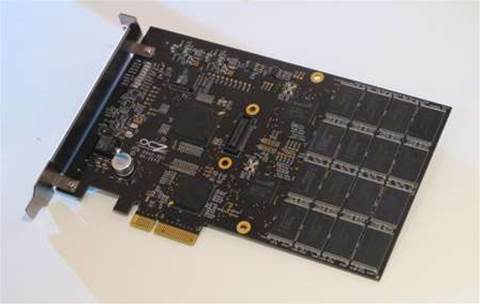Our second day at Computex 2010 involved a barrage of news about developments in motherboards. One really interesting thing about this year is that virtually none of the chip makers have announced products for the PC. Which means that these conferences have touched on Intel's unlocked K series processors (which professional overclockers seem rather unimpressed by).
The two big manufacturers, ASUS and Gigabyte both had press conferences. These conferences also had appearances by Intel, whose representative gave the same speech at both, just transposing the company names.
Have an edge-way bet
ASUS talked up new power saving and overclocking features on its boards, and showed off a concept Intensity motherboard. This board uses a chip by a company called Lucid that has enabled ASUS to not only mount a midrange Radeon GPU and ram on the motherboard, but also for that to add to performance when a discrete graphics card is plugged in.
A new way to tinker with settings
Gigabyte announced several overclocking focused features, including a very prototypic app called Cloud OC. This HTML based program was demonstrated on an iPad, and allows you to control overclocking functions on your motherboard. At the moment it uses password protection, but we would imagine some serious security needs to go into the board before it hits the mainstream lest it opens up a whole new era of hardware destroying viruses.
How to impress the neighbours
 |
| Seriously impressive: OCZ's PCI-Express based SSD allows for raid arrays |
We also dropped by SSD maker OCZ. This Amerian based company was showing off a few new products, including a wide range of SSD form factors. Most exciting though was an affordable PCI-Express based SSD which uses sandforce controllers to create a raid array. It enables much faster performance than SATA based SSDs and should come in just under the US $500 mark.
The EEE Pad gets mobbed
 |
| The ASUS EEE Pad: drew a crowd of fingerprint-leaving admirers |
We also swung by the ASUS stand, where it was displaying a wide range of products. New netbooks, laptops and components were on display but the biggest crowd was around ASUS' EEE Pad tablet pc. Unfortunately the sheer volume of people crowding the fingerprint-smudge display cases meant that hands on time was not possible, but we did get a chance to look at possibly the coolest laptop at the show, which you can read about here.







_(11).jpg&h=142&w=230&c=1&s=1)


.jpg&w=100&c=1&s=0)
_(8).jpg&w=100&c=1&s=0)







.jpg&q=95&h=298&w=480&c=1&s=1)
.jpg&q=95&h=298&w=480&c=1&s=1)
.jpg&q=95&h=298&w=480&c=1&s=1)



